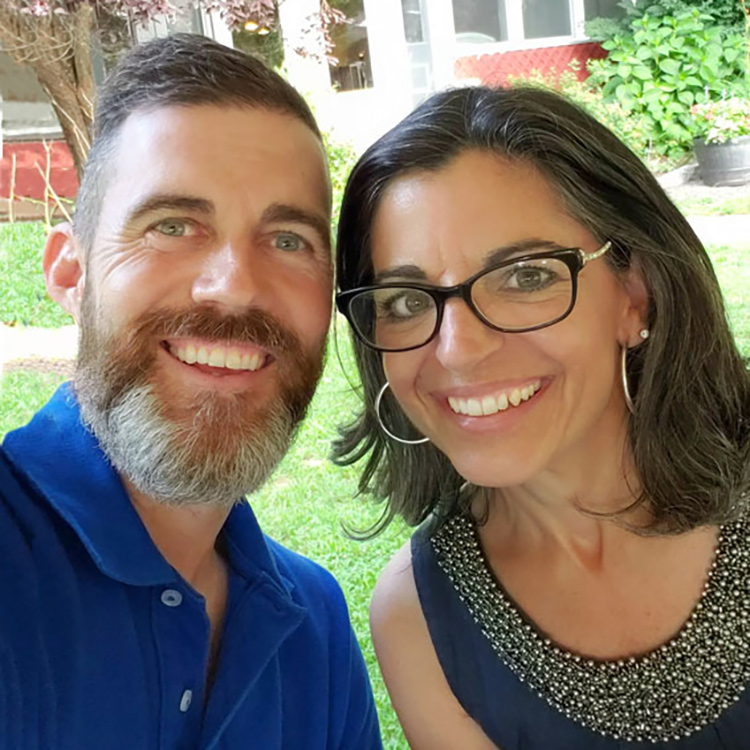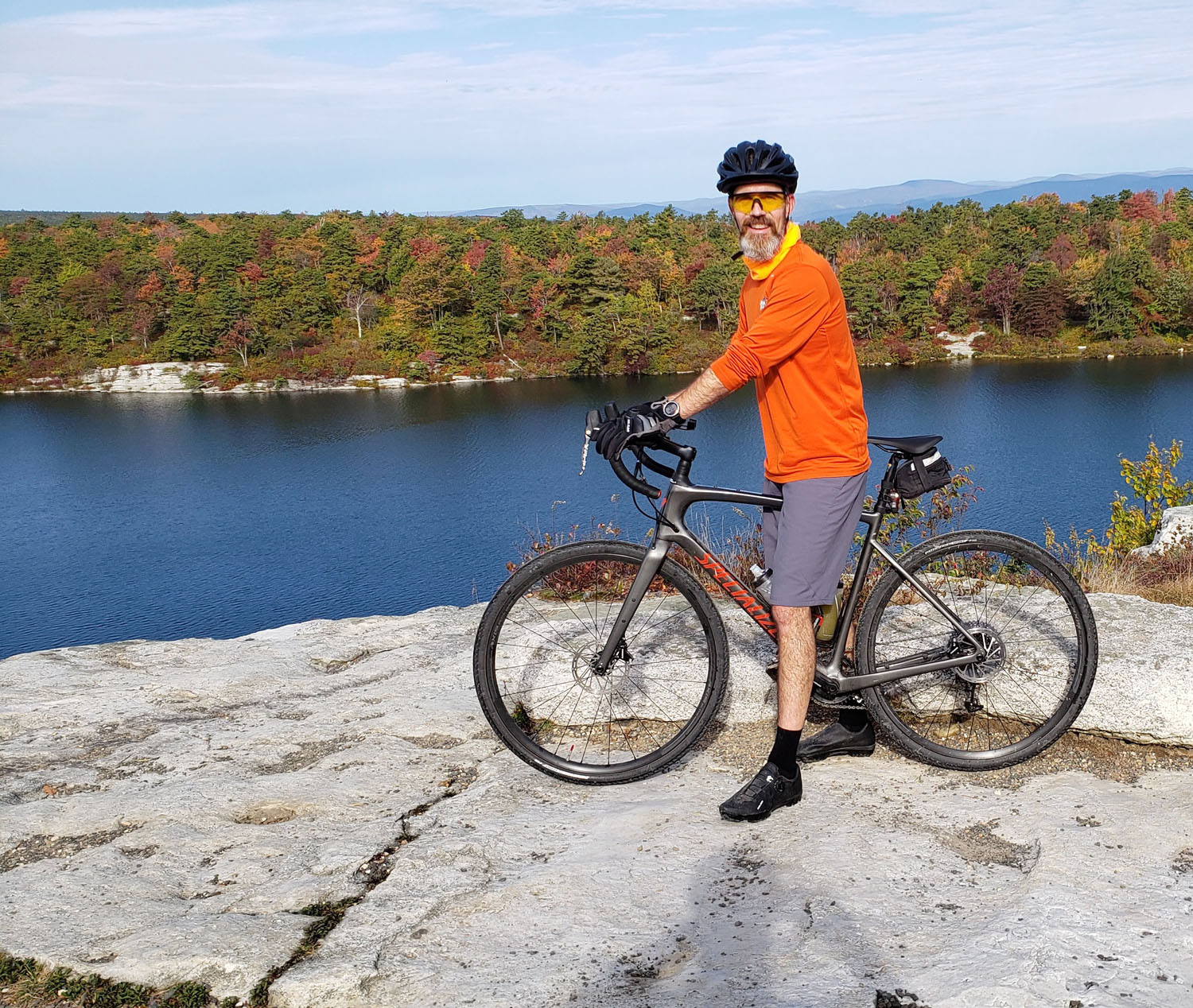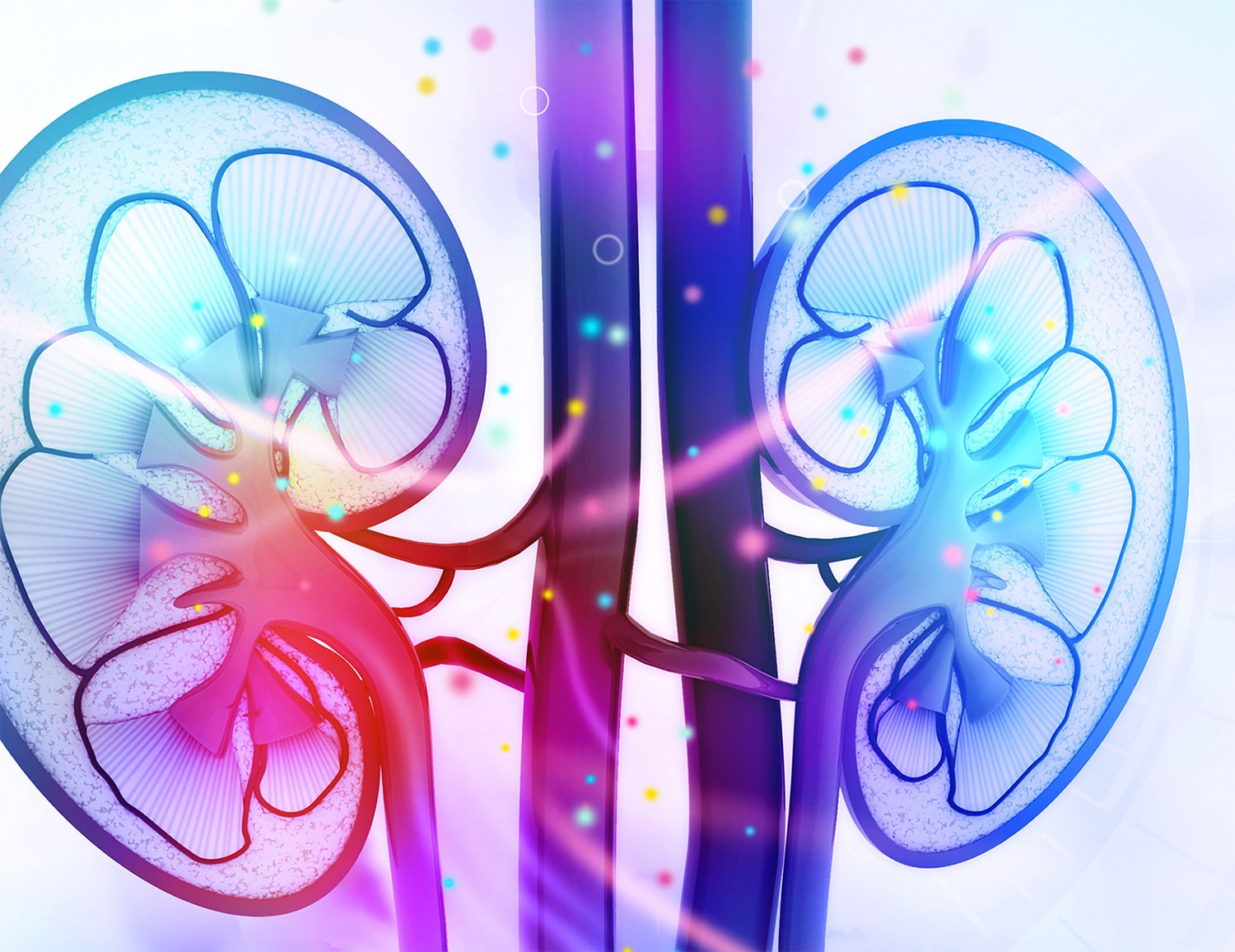THE FIRST CLUE that something was amiss with Bruce Hill’s health came at the end of 2014, when a routine blood test showed anemia. Anemia is unusual in a seemingly healthy 44-year-old man, so Hill’s primary care doctor in New York’s Hudson Valley referred him to a hematologist, who ordered more blood tests, and a gastroenterologist, who ordered an endoscopy and colonoscopy to check for internal bleeding that could possibly explain the low red blood cell count.
When the search for a cause turned up empty, Hill’s hematologist put him on an iron supplement for 12 weeks, which brought his red blood cell count back up to a normal level. His primary care doctor gave him a clean bill of health at his annual office visits in 2015 and again in 2016. By early 2017, though, Hill felt tired and run down. Suddenly, the typically energetic and active husband and father of two found himself struggling to keep up on the hikes he and his family normally enjoyed taking together. He made another appointment to see his doctor.

Bruce Hill and his wife, Susan Photo courtesy of Bruce Hill
“I walked in and she said, ‘You’re anemic again,’” Hill says. “She could tell just by looking at me.”
Along with the mysterious return of his anemia, Hill started experiencing night sweats. Over the next few months, he began losing weight and was nagged by a sharp, stabbing pain in his back. Ultrasound and CT scans revealed the answer that had almost certainly lurked undetected two years before: a more than 10-centimeter tumor, larger than a baseball, in Hill’s right kidney. Several small spots also showed up in his lungs. Hill had stage IV clear cell renal cell carcinoma (RCC), a type of kidney cancer. He had no time to waste and few, if any, choices to make.
“At the time, if you had a [kidney] tumor, it was pretty much ‘let’s get it out’ and then figure out what to do next,” Hill says.
Expanding Treatment Options
People with metastatic kidney cancer have historically had few options besides surgery. “If you go back more than 20 years, we didn’t have much to offer patients with advanced kidney cancer because they are traditionally resistant to chemotherapy and older forms of radiation therapy,” says David McDermott, a medical oncologist at Beth Israel Deaconess Medical Center in Boston. “The standard things that work for other tumors don’t work for kidney cancers well at all.”
Given this, kidney cancer treatment often begins with either partial or complete removal of the affected kidney, a procedure called a partial or radical nephrectomy. When the cancer hasn’t spread beyond the kidney or immediate area, surgery to remove the tumor or the entire kidney offers a potential cure. It helps that the body has two kidneys, making one of them essentially a spare. That’s why it’s possible for a healthy person to donate a kidney to another individual who needs it. Some people are born with just one kidney and don’t even know it.
The good news is that most of the more than 76,000 estimated new cases of kidney cancer diagnosed in the U.S. in 2021 are expected to be caught at earlier stages. About 80% of kidney cancers are found either when confined to the primary site in the kidneys or in the kidney and nearby lymph nodes. Most of the remaining cases of kidney cancer are diagnosed at a more advanced stage after spreading to distant sites in the body, including the lungs, liver, bones, skin or brain.
Fortunately, there are now a growing number of treatment options for those diagnosed with advanced kidney cancer. Most of these newer options fall into one of two categories: immunotherapies, which work by unleashing the immune system to fight cancer, and angiogenesis inhibitors, which block the growth of blood vessels that feed cancer, often by targeting a protein known as vascular endothelial growth factor (VEGF). (Angiogenesis refers to the development of new blood vessels.) Angiogenesis inhibitors generally can’t get rid of cancer altogether, but they can slow it down by directly targeting one of the reasons kidney cancers are hard to kill: The tumors frequently carry genetic alterations that make them rich in substances, including VEGF, that encourage the formation and growth of new blood vessels needed to feed a burgeoning tumor.
Angiogenesis inhibitors became available for the treatment of advanced kidney cancer in 2006, when the Food Drug Administration (FDA) approved Sutent (sunitinib). Other similar angiogenesis-inhibiting drugs, including Inlyta (axitinib) and Avastin (bevacizumab), have followed. These drugs work by blocking VEGF and in some cases other proteins that encourage cell growth. In 2017, the FDA expanded the approval of Sutent for use after nephrectomy to reduce the risk of kidney cancer returning in those patients deemed to be at high risk for recurrence. This approval was based on findings from a randomized trial of 615 patients that showed that 59.3% of patients treated with Sutent following nephrectomy had not experienced a recurrence after five years, compared to 51.3% of patients receiving placebo after surgery.
In 2016, a clinical trial showed that there was a second approach to treat RCC. The immune checkpoint inhibitor Opdivo (nivolumab) extended the median survival by five months over the standard of care at the time in 821 patients whose advanced kidney cancers had progressed on treatment, leading to its FDA approval for RCC following anti-angiogenic therapy. Opdivo and other checkpoint inhibitors approved for RCC work by preventing interactions between PD-L1 and PD-1, proteins on the surfaces of some tumors and immune cells. When the interaction between the two proteins is blocked, it frees up the immune system to fight cancer. While checkpoint inhibitors don’t work for every cancer type or all patients, they have improved treatment for some patients with advanced cancers and offered options to those who wouldn’t have had them before.
In 2018, the FDA approved the first immunotherapy combination of Opdivo and Yervoy (ipilimumab) as a first-line treatment for patients with intermediate-risk or poor-risk advanced RCC after a randomized clinical trial, which included 847 of these patients, found the combination treatment led to better outcomes compared with Sutent. Yervoy complements Opdivo by blocking another immune checkpoint receptor on immune cells called CTLA-4. At a median follow-up of 25 months, the 18-month overall survival for those patients with intermediate-risk or poor-risk disease who were taking the combination immunotherapy was 75% compared to 60% on Sutent. Then, in April 2019, the FDA approved the immunotherapy drug Keytruda (pembrolizumab) together with the VEGF inhibitor Inlyta for first-line treatment of advanced RCC. In the study leading to the FDA approval, overall survival at one year was 90% for those taking the combination compared to 78% with Sutent. The following month, the FDA approved the combination of Inlyta with another immunotherapy called Bavencio (avelumab). On Jan. 22, 2021, the FDA approved the combination of Opdivo and Cabometyx (cabozantinib), an angiogenesis inhibitor that targets VEGF as well as other gene pathways important to kidney cancer development.
“Today we have so many treatments we didn’t have in the past and that has impacted survival in a significant way,” says Toni Choueiri, a medical oncologist at Dana-Farber Cancer Institute in Boston.
The median survival for a person with advanced kidney cancer 15 years ago was just over a year, Choueiri says. Now, people with advanced kidney cancers live a median of four years. Despite seeing improvements in overall survival with combination treatments, there’s plenty of work to do, Choueiri says. “It’s been a humbling journey. We haven’t cured many patients.”
More Art Than Science
As treatment options have grown in number, so have questions about which approaches are best for which patients and how to choose among them. Doctors rely on clinical features including blood cell counts and other factors to determine which patients with kidney cancer are at higher risk for poor outcomes. But, Choueiri says, “unlike lung cancer and others, we don’t have biomarkers” in the tumor or blood that indicate whether the cancer will respond to certain treatments.
As a result, “choosing among [treatment] options is more art than science,” says McDermott of Beth Israel Deaconess. “It often comes down to the pros and cons of each approach and physician comfort in managing those treatments.”
Combination treatments, while they can lead to good outcomes, also more often come with complications due to side effects associated with two drugs instead of one. McDermott often uses the combination of Opdivo and Yervoy for his patients. He bases this on research from the Checkmate-214 trial. The most recent data, presented at the European Society for Medical Oncology Virtual Congress in September 2020, show that 50% of patients with intermediate-risk or poor-risk advanced RCC taking the immunotherapy combo were alive at four years compared to 35.8% of patients taking Sutent.
“That’s pretty good,” McDermott says. “It’s not great, but it’s a high bar for other approaches to beat. To me, what’s going to matter is where these patients are in five years. How many are alive with treatment? How many no longer need treatment?”
Long-term data on the combinations of immunotherapy and targeted therapies aren’t in yet. Even when they are, questions will remain. That’s because newer immunotherapies and targeted treatment combinations have been approved based on comparisons against the old standard of Sutent, rather than comparisons to each other. In addition, ideally, drugs used in combination would be compared to the same drugs in sequence, says James Brugarolas, a renal oncology specialist and director of the Kidney Cancer Program at the University of Texas Southwestern Medical Center in Dallas. He also says it’s not clear whether it is better to administer a combination immunotherapy or a combination of immunotherapy and targeted therapy together.
“There is lack of understanding of the magnitude of the synergy and whether these combinations are necessary for all patients,” says Brugarolas.
An oncologist who specializes in kidney cancer can navigate the multiple available treatment options.
Given the complexity of care and the number of options for people with metastatic kidney cancer, James Brugarolas, a renal oncology specialist and director of the Kidney Cancer Program at the University of Texas Southwestern Medical Center in Dallas, suggests seeking out an oncologist who sees a lot of patients with kidney cancer whenever possible. He also recommends seeking treatment at a cancer center that offers a number of clinical trials for the disease.
“Treatment is very nuanced, and that level of expertise is difficult for someone that may see one advanced kidney cancer patient a year,” he says.
When Bruce Hill was first diagnosed with advanced renal cell carcinoma, he had surgery to remove his kidney at a local hospital in New York’s Hudson Valley. He then opted for a kidney cancer specialist at Memorial Sloan Kettering Cancer Center in New York City, where he received a combination immunotherapy treatment soon after its approval.
“The [advanced] kidney cancer treatment landscape is changing very rapidly,” Hill says. “There are so many options now that you really need to have an oncologist who is part of that community and on top of what’s going on. That’s my top recommendation for anybody diagnosed. The second is: find a community of people like yourself.” Hill notes that he found a number of great resources and support online.
Looking Ahead
For Hill, the combination of the immunotherapy drugs Opdivo and Yervoy has been effective. Hill had surgery to remove his kidney in June 2017 and another surgery to remove three large spots from his lungs in October 2017. Then he went to see an oncologist at Memorial Sloan Kettering Cancer Center in New York City, who recommended a period of watchful waiting for smaller spots that remained in his lungs. Hill started on the immunotherapy combination in August 2018 after the spots showed signs of progression—just months after the FDA approved the drug combination for kidney cancer treatment. Two months later, the spots were shrinking. By December 2018, only one tiny spot remained visible, and it’s been stable since. He is no longer undergoing treatment and recently graduated to having scans every six months instead of every three.

Advanced kidney cancer survivor Bruce Hill bikes in the Shawangunk Mountains of New York. Photo courtesy of Bruce Hill
Scientists and physicians are also working on other approaches to help patients—not all of which rely on new drugs or drug combinations. For example, some patients with metastatic kidney cancer may have a small number of metastases that develop two to three years after surgery. In such cases, Brugarolas and his colleagues are pioneering an approach to treating kidney cancer known as stereotactic ablative body radiation therapy, in which focused radiation is applied directly to the sites of a cancer’s spread. The treatment can be enough to control certain slower-growing metastases. It’s also possible that such treatment in combination with immunotherapy could help to further activate the immune system against the cancer. Brugarolas is also excited about the potential of novel imaging approaches to help visualize PD-L1 that could identify which kidney cancers will respond to immunotherapy treatment.
Other potentially promising drugs, including a glutaminase inhibitor and a modified form of a drug called interleukin-2, are being tested in clinical trials to be used in combination with Opdivo, Choueiri says. A phase III trial is now testing a new drug called MK-6482, which has shown promise as a first-in-class single agent to block blood-vessel growth by targeting another protein in the angiogenesis pathway. There is also hope for discovering new biomarkers to help decide among treatment options for individual patients. For instance, a study published in the July 2020 Journal for ImmunoTherapy of Cancer showed that mutations in a gene called TERT might help identify patients who won’t likely benefit from immune checkpoint inhibitors, such as Keytruda or Opdivo.
“I think there is going to be a push toward precision medicine in kidney cancer,” says Ali Zhumkhawala, a urologic oncology surgeon at City of Hope National Medical Center in Duarte, California, who notes that knowledge of tissue biology coupled with advances in imaging could expand understanding of RCC and its treatment. “I think a lot of neat things are coming around that will help tailor treatment to individual patients.”
Hill remains encouraged by the progress, particularly as someone who benefited from a new immunotherapy combination shortly after its FDA approval. Now a member of the Patient and Caregiver Advisory Council for the Kidney Cancer Association, Hill advises patients to explore all their options. “Don’t take this diagnosis and think it’s the end of your life, because it’s not necessarily,” he says. “There have been a lot of advancements in treatment and how to manage [advanced] kidney cancer. Even if you don’t have a complete response, treatment may keep the cancer in check to stop the progression. You can live a healthy life.”
Cancer Today magazine is free to cancer patients, survivors and caregivers who live in the U.S. Subscribe here to receive four issues per year.





